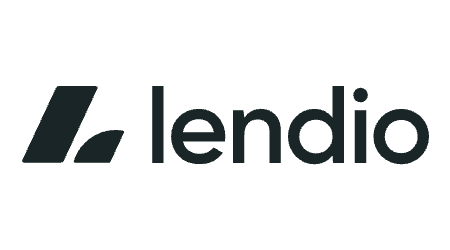Small Business Administration (SBA) loans are government-guaranteed business loans for small businesses that struggle to qualify for bank financing. Often, lenders use the term SBA loans as a short-hand for the SBA 7(a) loan program. It’s the most popular option since you can use an SBA 7(a) loan for almost any business purpose.
These loans can come with low interest rates and fees — especially compared to the alternatives available to businesses that can’t qualify for a traditional business loan. But the application process takes more time and effort than your average small business loan. Often it takes at least three weeks to get approved, though it varies by lender. Follow these steps to apply for an SBA 7(a) loan.
Step 1: Find an SBA 7(a) lender
An SBA lender is a business loan provider that the SBA has authorized to offer government-guaranteed loans. Many banks are SBA lenders, though many online lenders received SBA authorization in 2020 to help with the Paycheck Protection Program (PPP). Here are some tips for finding the right provider.
Consider a lender that knows your business
Start your search with providers you already have a relationship with. This can speed up the application process since they already have a lot of information about your business on hand. It might also increase your chances of approval if you’re in good standing.
Look for an SBA preferred lender
An SBA preferred lender is part of its Preferred Lender Program (PLP) and has the authority to approve SBA loan applications. Other lenders have to wait for the SBA to approve an application after they underwrite the loan, which takes five to 10 business days for most SBA 7(a) loans. The fastest SBA turnaround time is 24 hours for an Export Express loan and 36 hours for an SBA Express loan.
Decide if packaging is worth the fee
The SBA loan application itself is more complex than your typical business loan application. The forms can be difficult to navigate if this is your first major loan application. Many online providers like SmartBiz and Funding Circle offer packaging services. But packaging fees can run as high as $30,000, — depending on the loan size.
Check the lender’s requirements
In addition to meeting the general requirements for an SBA loan, most lenders have additional requirements to qualify. Usually, you need to meet the following criteria to qualify for most SBA 7(a) loan programs.
- Personal credit score of at least 660
- Business credit score of at least 130 or 140 — this only applies to 7(a) small loans, Community Advantage loans and Express Bridge loans
- At least two years in business
It’s possible to find an SBA lender that accepts a lower credit score and less time in business, but your options will be limited.
Make sure it offers the right type of SBA 7(a) loan
Most small business lenders offer standard SBA 7(a) loans. But if your options may be more limited if you want to borrow through the SBA Express loan or a pilot loan program like Community Advantage. Many SBA lenders can be vague about which SBA loan programs are available. In that case, call and ask.
Read our guide to the SBA 7(a) loan program for information on maximum loan amounts, loan repayment terms and for different types of 7(a) loans. Plus, the lender you choose may have an effect on how much you can borrow with your business loan.
Step 2: Gather your documents and fill out the forms
Before you get to the SBA loan application, it helps to gather together all of the documents you need to submit with the application. You’ll need the information on these documents to complete the application and supplemental forms that the SBA requires for 7(a) loans.
SBA 7(a) loan document checklist
While some lenders might have different requirements, you typically need the following business financial statements and forms to apply for an SBA 7(a) loan.
- Profit and loss (P&L) statement current within 180 days of the application
- Supplementary P&L schedules for the past three years
- Projected financial statements for the next year, with a written explanation
- Any business certificates or license
- Records of any past business loan applications
- Three years of business tax returns
- Three years of personal tax returns
- Resumes for each business owner and cosigner
- Business leases for any real estate your business rents
- SBA Form 1919: Borrower Information Form
- SBA Form 413: Personal Financial Statement — one for each business owner and cosigner
Businesses that use a third party to complete their SBA 7(a) loan application must fill out an SBA Form 159: Fee Disclosure Form. If a business owner has faced criminal proceedings, you may also need to fill out SBA Form 912: Statement of Personal History.
Step 3: Complete the application
An SBA 7(a) loan application also varies from lender to lender. However, you should be prepared to provide the following information.
- An overview and history of your business and its challenges
- A breakdown of all owners and affiliates, with contact information
- Details on other government-issued debt, like other SBA loans or USDA financing
- Specifics on why your business needs an SBA loan and how it will use the loan proceeds
- Details on how your business plans to pay it back
Review and sign your letter of intent
After your lender has had a chance to review your entire application, it’ll send your business a letter of intent (LOI) if it qualifies.
- Your LOI tells you the potential interest rates and repayment terms and loan amount your business is eligible to borrow.
- Typically it takes a week or two to receive your LOI after submitting your application.
- Your lender might also ask for a deposit of around $2,000, along with your signed LOI.
If you’re satisfied with these potential terms, sign and return your LOI to your lender as soon as possible so it can get started on underwriting your loan.
Wait for underwriters to review your application
It can take as long as two or three weeks for your lender’s underwriting team to review an SBA application — it’s as much of a process for them as it is for you. Typically, there’s nothing for you to do but wait, though you might be asked to provide additional documents or details on your business’s financials.
Step 4: Sign the commitment letter and close the loan
If the underwriters give your business the green light, you’ll get a commitment letter that gives you more details about your loan terms. If you accept these terms, you might have to put down another deposit, usually 5% of the loan amount or $5,000, which you’ll get back if you end up backing out of the deal.
Closing can take a while for loans that require appraisals or reviews by third parties, like real estate loans. Once your lender has finalized every last detail, it’ll send your business the loan agreement. At this point, you’ll review and sign the agreement and pay any closing-related fees andthe SBA guarantee fee. After that, your business will receive the funds.
WATCH: 4 tips to boost your chances of approval

Top reasons SBA loans are rejected
Worried you won’t get approved? Here are the top reasons the SBA rejects applications.
- Poor credit can cause an issue. While the SBA doesn’t have any credit cutoffs, most lenders still prefer to work with business owners that have good to excellent personal credit scores. With that said, a past bankruptcy that you’ve recovered from won’t necessarily hurt you — as long as there’s a reasonable explanation.
- Past felonies, current criminal proceedings or still being on parole can disqualify a business from getting an SBA loan. You don’t, however, typically need to worry about lower-level crimes from 20 years ago — or traffic tickets.
- Student loan defaults by a major business owner — or defaults on any federal loan — could disqualify your business.
- Too many assets may also be a problem. The SBA wants to see that your business has made a real effort to get financing elsewhere, including tapping into some personal or business assets. This doesn’t mean you have to go broke, but you don’t have a goldmine you could use — but aren’t.
How to apply for an SBA real estate loan
Several SBA programs offer real estate loans, most commonly through the 7(a) and 504 programs. While the application is similar to other 7(a) loan applications, your business needs to take some extra steps to get all of the documentation together — like getting the property appraised and evaluated for potential environmental issues. On top of the other eligibility requirements, you’ll also need to:
- Make a minimum down payment of 10%
- Have plans to occupy at least 51% of the property
When it comes to documents, lenders typically ask for the following.
- Real estate purchase agreement
- Appraisal of the property
- Environmental studies
- Rent rolls for the new property
- Leases for tenants of the new property
- Remodeling or construction plans
- Maintenance expenses
- A report on the property’s condition
How to apply for an SBA startup loan
SBA loans are one of the least-expensive options out there for entrepreneurs and young businesses — and it’s catching on. Since 2013, the percentage of SBA loans that went to new businesses went up by 12 percentage points, from 26% to 38% of all SBA loans.
While applying for an SBA startup loan is nearly the same as any other 7(a) loan, there are a few key differences.
- Startup loans require more collateral because they’re riskier than other types of business loans.
- Past experience in the industry is key to convincing your lender and the SBA that your new enterprise will be successful.
- Startups are expected to contribute a little more to the project you want to fund than you would on most SBA loans — around 20% or 30% of the amount your business is borrowing. Most SBA 7(a) loans only require 10%.
- Working in an eligible industry that other lenders consider to be high-risk — like accommodation and food services — could increase your chances of getting approved.
Startup-friendly programs
Not sure where to start looking for funds? You might want to check out these government-backed business loan programs.
- SBA microloans are for businesses that need $50,000 or less to cover smaller expenses. These small government-backed loans are available through nonprofit microlenders and typically come with higher interest rates than a 7(a) loan.
- SBA Community Advantage (CA) loans offer up to $350,000 in government-backed financing through community lenders. You can sometimes qualify for a CA loan with bad credit and less than one year in business.
Bottom line
The SBA 7(a) application is more complex than your typical bank or credit union business loan. But the low interest rates and fees may be worth for small businesses that need funds to grow. Read about our picks for the best SBA lenders to get started or compare more business loans.
More guides on Finder
-
Consider These SBA Loan Alternatives During Government Shutdown
Need capital while SBA lending slows? Discover traditional, online, microloans and more to keep your business funded during the government shutdown.
-
SBA loan down payments are required on three types of SBA loans
A guide to down payment requirements for certain SBA business loans.
-
SBA Loan Calculator for 2025
Estimate monthly payments for that government-backed loan you’ve been eyeing.


